What could a driverless car look like?Picture yourself standing on the street ten years from now. Those noisy, dirty, and unsafe cars driving past you won’t be there anymore. Well, at least not too many of them. Instead, the road will be filled with peaceful, clean, and safe vehicles – like the ustwo Roo.
The ustwo Roo, named after our maternal animal friends that carry their passengers as they hop around town, is the latest in a recent influx of autonomous concept cars, but ours comes with a difference – a very human difference.
ustwo’s Autonomous Vehicle (AV) has been designed from the ground up, shaking off the shackles of legacy technology like the internal combustion engine and even the steering wheel to craft everything around the people’s needs for the technology – from the miniaturised wing mirrors to the modular seating arrangement within.
The “revolution in mobility” that is AVs gives us a unique opportunity to start again – and that’s exactly what we do in our latest book, Humanising Autonomy: Where Are We Going? which is free to download now.
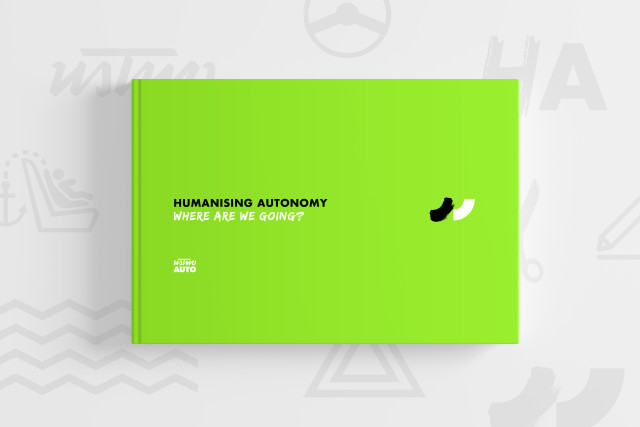
So why the Roo? It continues the age-old automotive industry tradition of being named after a powerful member of the animal kingdom. Just like our marsupial friends, the Roo carries its passengers safely but also demands respect from its fellow road users, while being friendly to pedestrians and cyclists. You wouldn’t mess with a kangaroo, but you might pet it.
But perhaps even more importantly – the Roo's design is informed by our user research. The same research that underpins the design principles and positions of our book. Hopefully, in each of the features below you will be able to see how this AV is built on real human insight, to meet real human needs.

Features
1. Remember – there is no driver
Fully autonomous vehicles won’t need a driver’s seat or steering wheel, though some people would still like to sit in the “driver’s seat” (for example people with anxiety). Maybe a driver’s seat that can move inward? With a retractable wheel? The driver's seat may not be a literal thing, it could be about being in a place where someone feels in control. The equivalent of sitting on the sofa holding the TV remote control.
2. Less need for focused aerodynamic design
Aerodynamically speaking, if it's a city car it won't need much streamlining, so we can play with the shape a lot more. Also, since all propulsion will be below the car and at the wheels, there is no need for engine room. The bonnet (hood) could be nearly eliminated.
Many cars are designed for stylistic reasons. Much of which comes from a sense of aero-dynamism to make the car go faster or actually so that it looks like it can go faster. Given our car is an electric vehicle (EV) and incredibly fuel-efficient and that it can reach the speeds it needs to with little difficulty, streamlining is less of a factor. The exterior design focus can then shift to the best user experience of the interior. Though it will still look sexy, of course.

3. No crumple zone
Driverless cars may never crash. Studies show the average speeds within London to be slow, around 8mph, and AVs also won’t have traditional engines. So do they need pronounced crumple zones at all? Can we bold in that regard? Other vehicle may crash into it, but there are other safety physicalities and systems to address this scenario. Booster seats for kids will be provided under the Roo's seating.
4. Anthropomorphised / respected stance
The front grill of the car gives it a personality, as does its size and shape. You’d feel safe near a Google car – it's cute. On the flip side, you wouldn’t bully an autonomous Humvee. This vehicle needs to command respect so that it’s not bullied, yet seem friendly so as not to frighten or intimidate other drivers and pedestrians. It’s face, shape, and size should have this balance, just like a kangaroo.
5. Something to orientate the vision-impaired
If there’s no driver, there’s no need for wing (side) mirrors. But vision-impaired people use them to navigate and find the door. Let’s remove the fully grown mirrors and replace them with an equivalent tactile counterpart.
6. Forwards and backwards
With shared AVs of the future, routes are created algorithmically and on-demand. For that reason, it’s more efficient for the AV to be able to drive both forward and backward with equal speed and agility. The vehicle then should be near identical both front and back.
7. Branding
As we discovered in the Branding and Service Design section of our book, creating the right brand for the vehicle is incredibly important. To hop on board, the user will need to trust the brand itself. Some OEMs (car manufacturers) may want to spin-off a separate brand in order to build the appropriate image from the ground up.
8. Accessibility features
- Sliding doors: given congestion, increasing population, and people with disabilities, it’s far less obstructive to have sliding doors rather than hinged doors.
- “Curb safe”: the Roo can lower so that its floor aligns perfectly with any curb height for a seamless entry into the AV for wheelchair users.
- Handrails: internal handrails at both doors help all users in entering and exiting the vehicle.
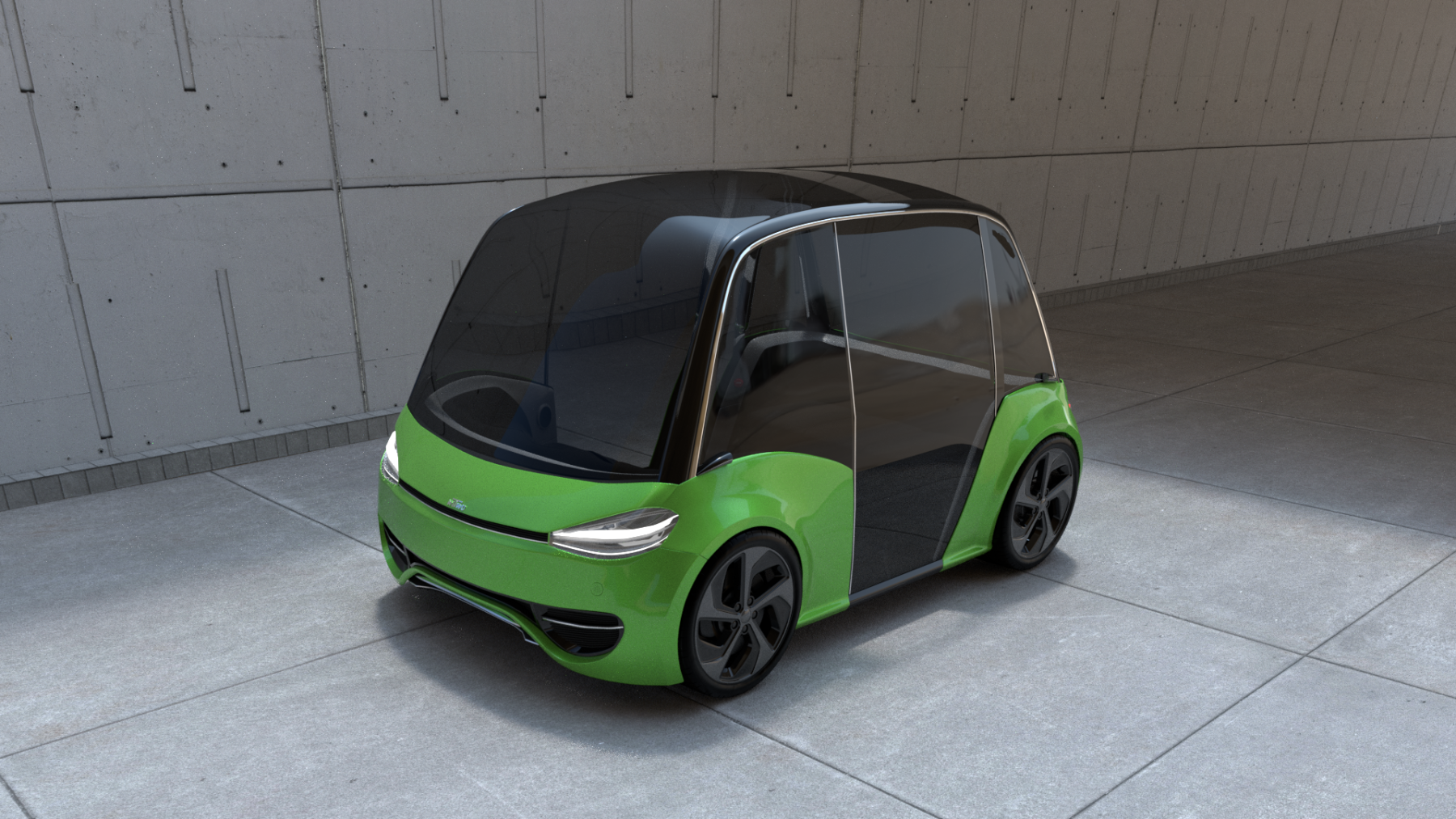
9. A means to communicate intent to pedestrians and other cars
Turn signals (indicators) today communicate intent as to left or right turning. Similarly, brakelights communicate the car is stopping. In the future, other sets of indication might be required, ie “accident ahead” or “changing lanes” or “Hello cyclist, I have seen you and I’ll be careful” or “Hello pedestrian, you may cross in front of me”. Displays front and rear might be required to communicate to others.
“I would have thought that regardless of the brand, each vehicle would have some parameters like if I wanted to get somewhere in a hurry, I might have to tell the vehicle that I’d like to get there quick or if I wanted to get there comfortably because I wanted to read… I would want a car that had that level of control, if I was going to own one and if I was cycling around one… I’d kind of wanna be aware of what mode it was in — I think if it was in a hurry, in a particularly aggressive mood or whether it was playing it safe.”
10. Directional sound emitters and receptors
According to our sound design for electric vehicles exploration it could be interesting to use directional sound to communicate audibly to individuals, such as pedestrians, rather than groups using a horn. This could be done with directional speaker technology or through the individual’s personal device.
11. A learner plate for AVs new to certain traffic conditions
Some vehicles will need to graduate to certain road conditions over time, ie suburban environments to suburban environments in poor weather. Like a learner driver today, it would help others know they are less experienced. So, outside the car might it say: “learning rain mode”?
12. Experience points for AVs
A more granular version of the above, “experience points” can be a device to help others feel safer around the AV. Perhaps a number (denoting experience points) combined with iconography from point 9 on the rear and front of the vehicle? Or maybe just a medium and high rating. Think restaurants displaying their food hygiene rating in the window.
13. Easier / dynamic way of identifying a car (than a licence plate)
When you’re waiting for an Uber, you have to look out for tiny pieces of text on the licence plate. Some people can’t see well, some people can’t even read Latin characters. Is there an easier way to identify that a booked vehicle is your ride? Perhaps a “red fox” or “blue whale” system is easier to identify visually, paired with what is on your phone. This could be dynamic and change from fare to fare.
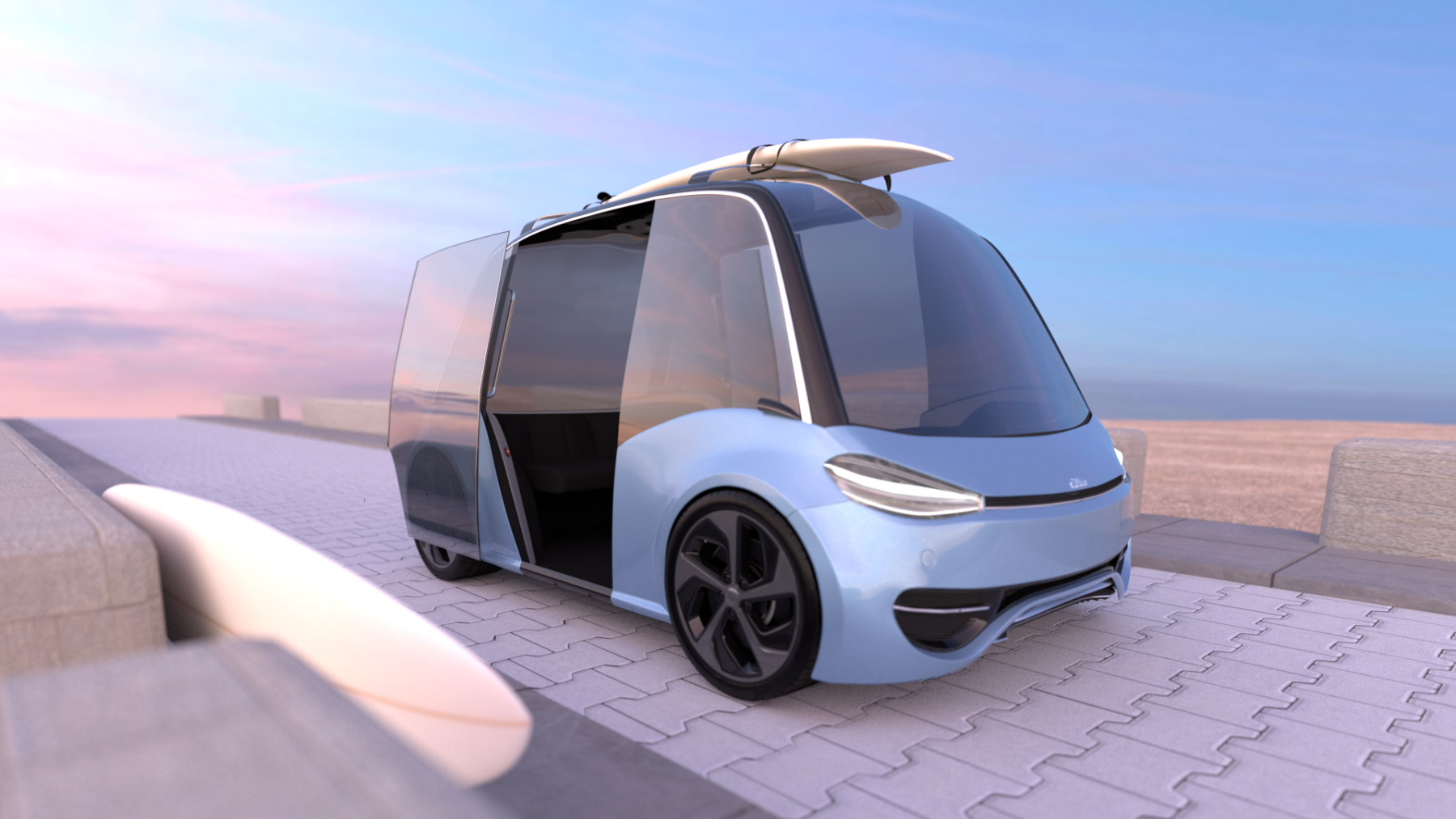
14. Mostly transparent – ability to look in for shared vehicles might reduce incidents
People are less likely to misbehave or mistreat the vehicle or others if they feel they can be seen. Yet people in cars do enjoy some privacy. Finding a nice balance is important.
15. Dynamically tinting windows
A glass box can get very hot very quickly, its windows causing uncomfortable amounts of glare. Windows that tint in reaction to the sun’s rays may make the passenger’s journey more comfortable.
16. Emergency stop button in the interior
This is unlikely to be used, but will help with people who are anxious knowing they have the option. Perhaps not “emergency stop”, but just “stop”?
17. Emergency exit system
Of course when things do go wrong, it’ll need to be easy to escape the vehicle. The AV needs to know when to automatically unlock its doors and who to contact in an emergency. An emergency break window hammer might be useful if the machine just breaks down and stops responding, despite its safety systems.
18. Onboard entity to talk to
An MIT study discovered that some people, when talking to a machine, need a physical entity to talk at. It’s hard to just talk into the ether. People need to direct their voices at something, either a person’s face or a microphone. Feedback too will need to come from a specified area. So a physical entity, an avatar, should be present to direct your communication to, like an Amazon Echo for the car.
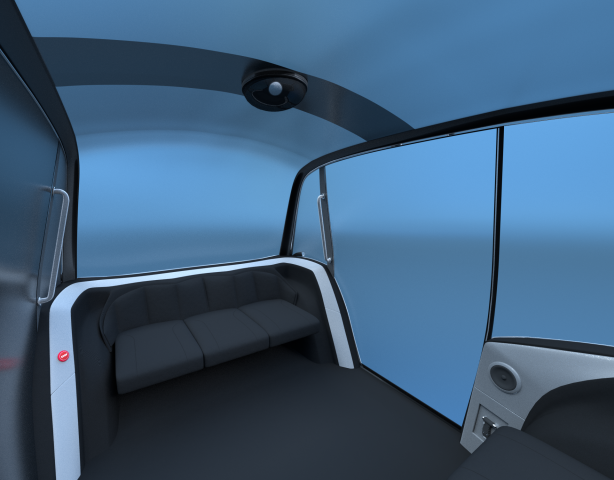
19. Device connectivity
Modern concepts show off plasma screens and lounges in driverless cars, but chances are people will be staring down at their own devices anyway. When people step into the Roo, their phone will instantly be connected, perhaps continuing the currently playing song through the car speakers rather than personal headphones, or bringing up that article on to the in-car display. A seamless transfer of media.

20. Personalisation
The vehicle knows who you are, where you are going, why, how you like the temperature, the seat position and so on, so the car will calibrate to those preferences. Even though it's a different car every time, it will feel like the same car every time.
21. Windows as augmented reality screens
We suggest that kids can play augmented reality (AR) games on the windows of the vehicle, ie tap the yellow car (that drives past in real-life) to score a point. This interaction with the outside world could help prevent motion sickness, which is expected to rise. A bit like Toyota and Copenhagen Institute of Interaction Design’s Window to the World concept.
22. No interior faff
Cars today have too much going on, with retrofit solutions to legacy problems. Also, without the need for driving controls, and designing from the ground up, AV interiors can be much simpler and roomier.
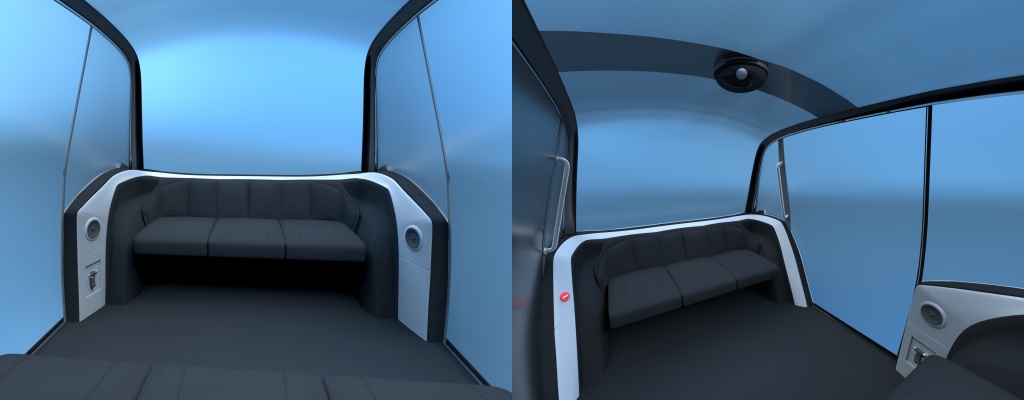
23. Modularity
These shared vehicles are out there in the field, being used in a huge beta test. We can iterate on both the digital and physical features of the car, using insights from the users and data, swapping what doesn’t work for something more useful.
24. Interchanging the role of the vehicle (ie shift from a taxi to a police car)
During the day, when demand is high, shared driverless cars will be picking up and dropping off people. But when the demand is low, these vehicles may not have anywhere to go, so they need to be utilised. Perhaps they could deliver pizzas, or parcels, or act as ambulances and emergency vehicles. On-board storage as well as exterior lighting, livery and logos should be used to demarcate the role of the vehicle. Perhaps the yellow “paintwork” of a taxi during the day could change to a red and white paintwork of an ambulance in times of emergency. An extra “skin” or two for every AV. It’s legal affordances on the road could shift when in “emergency mode” for example.
Further to this, people could choose the “paint job” of the vehicle on the fly, using an app on their device. A “dynamic digital paint job” concept.
“Q: Why do you think changing colour is important?A: Um, just to make it more...you know... um... interesting...”

25. Discovery / exploration
The Roo is not just a utilitarian concept, it’s about pleasure too. AVs can be used for a weekend away (with a surfboard or bike rack). It can help people discover new places (with a tourist voiceover mode or discovery mode). It can drive differently with car-sick kids on board. Moments that will make people smile.
26. Not too sci-fi!
All the concepts we see today are always so sci-fi and overly futuristic. We don’t think they’ll look too different to the designs seen now.
Food For Thought
We hope you’ve enjoyed the concept we’ve drawn out here. As always, these are provocations and points for further discussion with you, the reader – an equal participant in designing our driverless future.
Remember you can find more details in the book itself, download it here. And you can contact us direct – mobility@ustwo.com.

